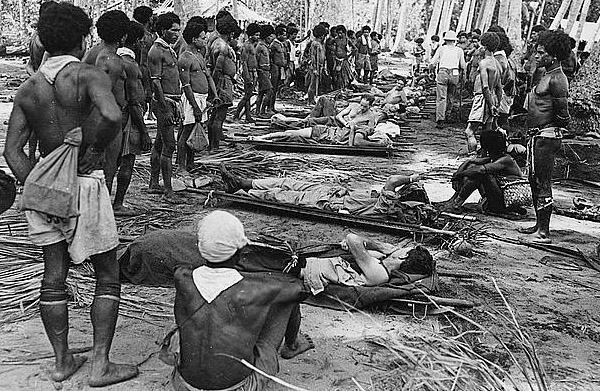 American and Australian casualties, with Papuan litter bearers. (DA photograph)
American and Australian casualties, with Papuan litter bearers. (DA photograph)
each bunker and jam hand grenades into firing slits, a process both slow and costly in casualties.
The Southwest Pacific Area was deeply concerned at the failure of the 32d Division's November attacks. Two weeks of offensive operations had produced 492 American casualties, and the enemy still held its positions. Staff officers wondered how much longer the underfed and diseased troops could keep fighting the Japanese and the climate of New Guinea. The international alliance that SWPA represented also showed strain, as Australians and Americans traded disparaging comments on their respective fighting abilities.
Changes were called for, and General MacArthur set them in motion. Summoning General Eichelberger, he bluntly told the corps commander, "Take Buna or don't come back alive!" Eichelberger immediately went forward to see conditions for himself. The enemy in front of the 32d Division now held a pocket stretching some four miles from Buna Village on the left to Duropa Plantation on the right. The fighting concentrated at two points along the enemy line, Urbana front on the extreme left and Warren front on the extreme right. Observing Urbana front on 2 December, Eichelberger found
14
